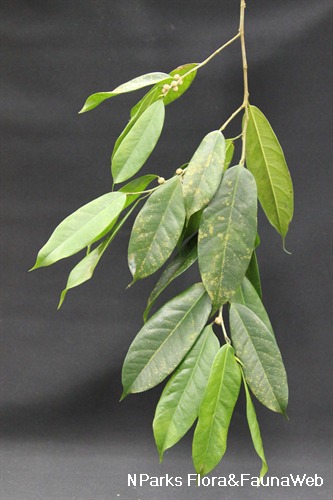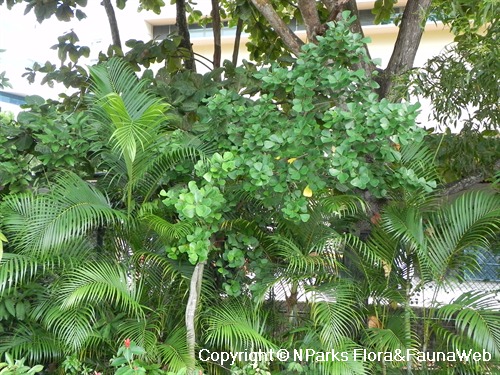
Name
Classifications and Characteristics
| Plant Division | Angiosperms (Flowering Seed Plants) (Dicotyledon) |
|---|---|
| Plant Growth Form | Tree (Shrubby (1m-5m)) |
| Lifespan (in Singapore) | Perennial |
Biogeography
| Native Distribution | Tropical Africa |
|---|---|
| Native Habitat | Terrestrial |
| Preferred Climate Zone | Tropical |
Description and Ethnobotany
| Growth Form | A small sized tree or shrub grows up to 3 m tall under cultivation. |
|---|---|
| Foliage | Leaves are thick and leathery, triangle-shaped. |
| Flowers | The flowers are tiny and develop within the syconium (fig). |
| Fruit | The small fruits (figs) are borne in the leaf axils and on the bare portions of twigs, round to ellipsoid, red at maturity. |
| Cultivation | This plant prefers full sun to partial shade with moderate watering. For indoor plants, care should be taken not to overwater, otherwise leaf drop and possibly root rot will occur. Allow the soil to dry between watering. Light levels, watering and humidity should be kept as constant as possible to avoid leaf drop. |
Landscaping Features
| Desirable Plant Features | Ornamental Foliage, Ornamental Fruits, Ornamental Form |
|---|---|
| Landscape Uses | Parks & Gardens, Interiorscape/ Indoor Plant, Container Planting, Suitable for Bonsai |
Fauna, Pollination and Dispersal
| Fauna Pollination Dispersal Associated Fauna | Bird-Attracting (Fruits) |
|---|---|
| Pollination Method(s) | Biotic (Fauna) (Insects (Ant, Beetle, Fly, Thrip, Wasp)) |
| Seed or Spore Dispersal | Biotic (Fauna) |
Plant Care and Propagation
| Light Preference | Full Sun, Semi-Shade |
|---|---|
| Water Preference | Moderate Water |
| Plant Growth Rate | Moderate |
| Rootzone Tolerance | Well-Drained Soils |
| Propagation Method | Seed, Stem Cutting |
Foliar
| Foliage Retention | Evergreen |
|---|---|
| Mature Foliage Colour(s) | Green |
| Mature Foliage Texture(s) | Leathery |
| Foliar Type | Simple / Unifoliate |
Fruit, Seed and Spore
| Mature Fruit Colour(s) | Red |
|---|
Image Repository
Others
| Master ID | 29749 |
|---|---|
| Species ID | 4058 |
| Flora Disclaimer | The information in this website has been compiled from reliable sources, such as reference works on medicinal plants. It is not a substitute for medical advice or treatment and NParks does not purport to provide any medical advice. Readers should always consult his/her physician before using or consuming a plant for medicinal purposes. |


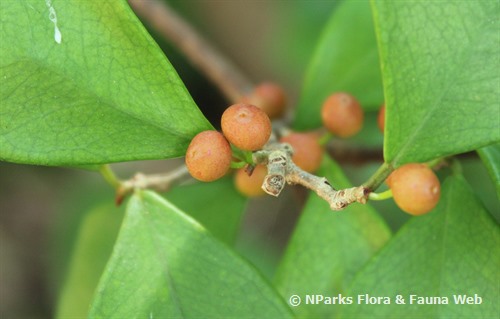
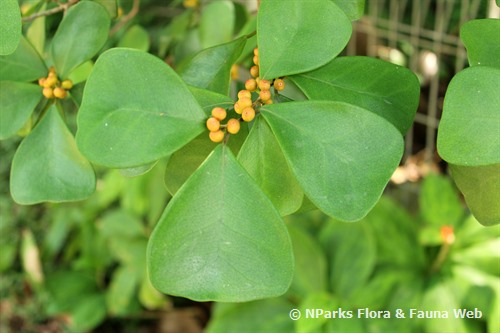
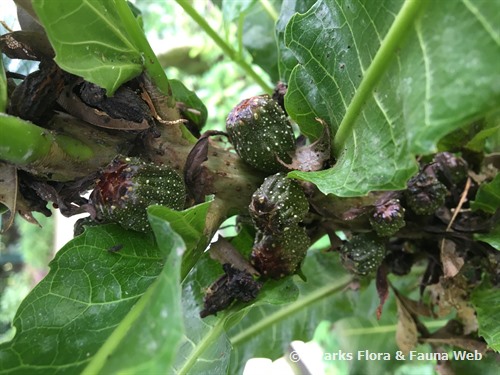
.jpg)

